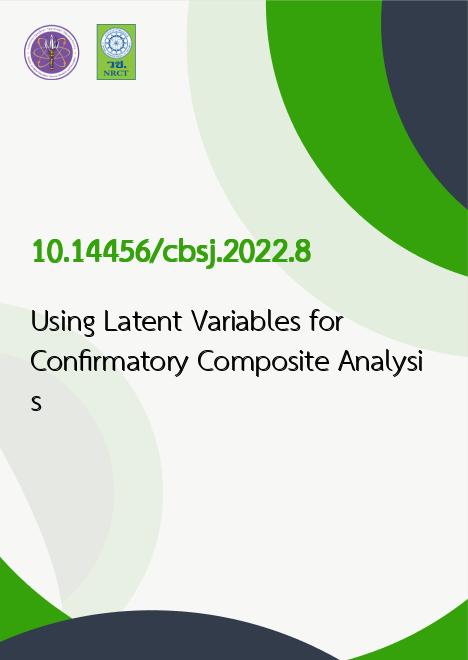
|
Using Latent Variables for Confirmatory Composite Analysis |
|---|---|
| รหัสดีโอไอ | |
| Creator | Chanta Jhantasana |
| Title | Using Latent Variables for Confirmatory Composite Analysis |
| Publisher | Chulalongkorn Business school, Chulalongkorn University. |
| Publication Year | 2565 |
| Journal Title | Creative Business and Sustainability Journal |
| Journal Vol. | 44 |
| Journal No. | 2 |
| Page no. | 22-40 |
| Keyword | Partial Least Squares Path Modeling, Confirmatory Factor Analysis, Confirmatory Composite Analysis |
| URL Website | https://cbsreview.cbs.chula.ac.th; https://so01.tci-thaijo.org/index.php/CBSReview/index |
| Website title | THAIJO; Creative Business and Sustainability Journal |
| ISSN | 2821-9236 |
| Abstract | In general, all constructs in a confirmatory factor analysis (CFA) are latent variables. Should all constructs also be emergent variables, a hypothetical construct stemming from a latent variable that has received little attention in studies, then a confirmatory composite analysis (CCA) is a possibility. This study employed latent variables as emergent variables in order to conduct a CCA. The latent variables were related to an individual's traits, attitudes, or behavioral notions, such as satisfaction, trust, or loyalty. An emergent variable is composed of data on capabilities, values, indices, therapies, and interventions, as well as an artifact or design idea. CFA was used to analyze the satisfaction, trust, and loyalty of 200 Lazada and Shopee customers, and additional emergent variables were created from latent variables for the CCA. The study demonstrates that emergent variables can arise from latent variables and that CCA is more accurate than CFA. |